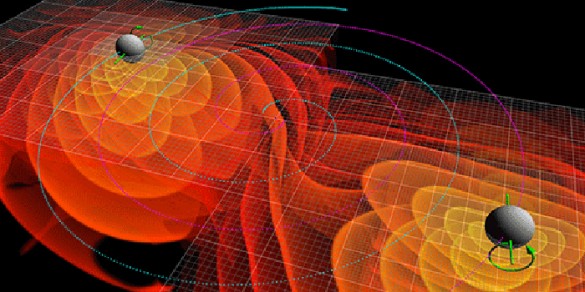
For 100 years, physicists have been searching for the gravity waves that Einstein predicted should exist. This week the scientific team working with a pair of massive detectors – the Advanced Laser Interferometer Gravitational-Wave Observatory (LIGO) – built specifically to detect these minuscule ripples in the fabric of space reported that their efforts have born fruit: Last September they recorded a pattern of gravity waves that appear to have been produced by a pair of black holes about 30 times the mass of the Sun locked in a death spiral that ends with their merger into a single object.
Szabolcs and Zsuzsa Marka (who both received Ph.D.s from Vanderbilt) and their colleague from the Columbia Experimental Gravity Group, part of the LIGO consortium, will be sharing the details of this monumental discovery with the Vanderbilt community next Thursday, Feb. 18, in a physics colloquium titled, “Astronomy’s ‘Next Big Thing:’ What can we expect from direct gravitational-wave observations in the near term?”
“The discovery of gravitational waves is, I think, the most important breakthrough in modern science,” Szabolcs Marka told CNN in an interview Thursday.
The free public lecture is scheduled for 3 p.m. in Stevenson 4327 and is preceded by a reception at 2:30 p.m. in Stevenson 6333.